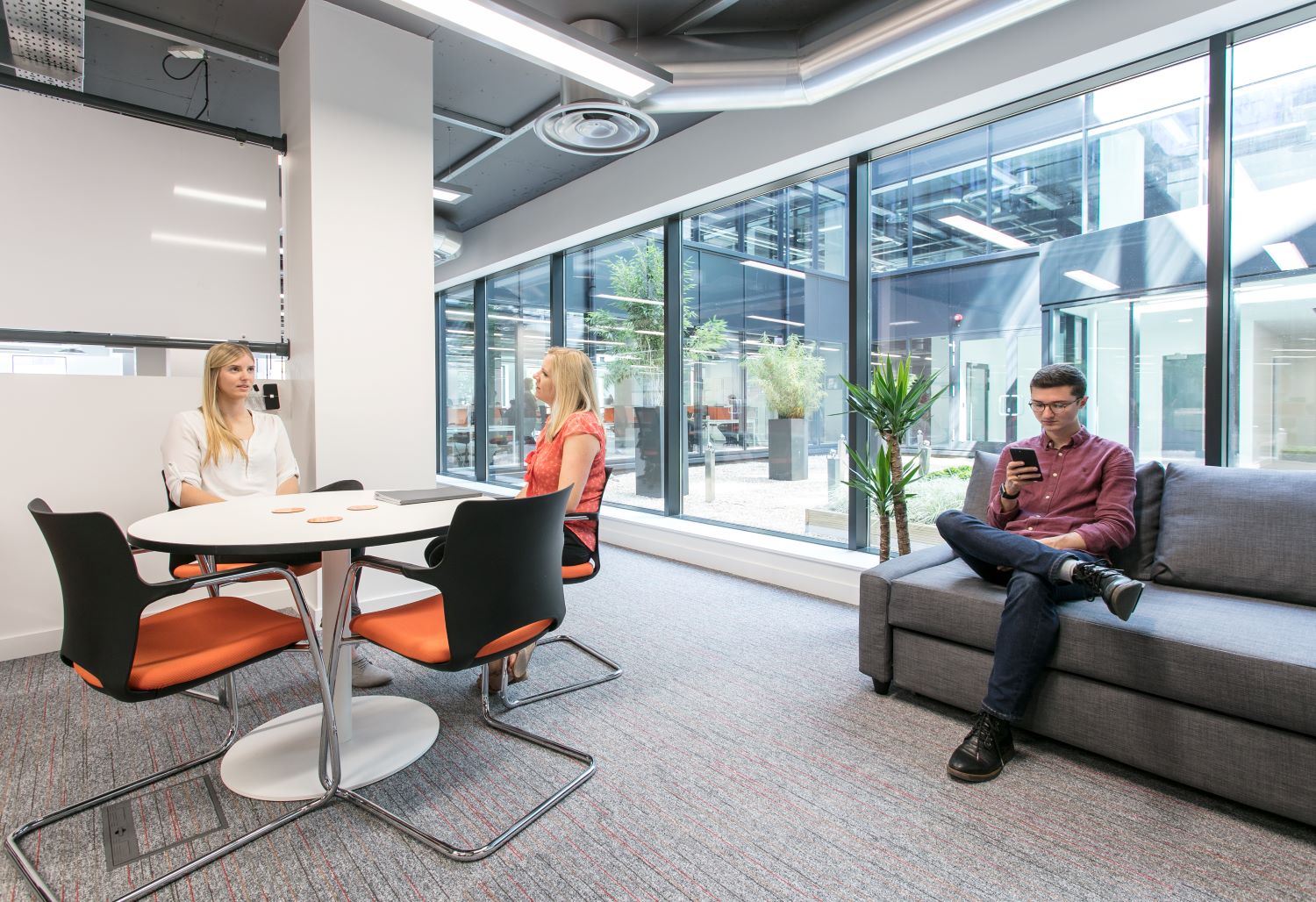
August, 2020
In this blog post, we look at how COVID-19 has affected biophilic design and how biophilic design will gain in stature and be adapted during the pandemic.
Over the past few years, biophilic design has been a popular office design trend. Biophilic design is focused around bringing the outdoors, indoors, and has been introduced by offices around the world to boost their employees’ wellbeing and increase their connection to nature. In light of COVID-19, however, many businesses have had to significantly change their office environment, affecting some of the current approaches to biophilic design.
1. Reduction of personal items and creation of outdoor spaces
Employees have been asked to remove personal and non-essential items from their work station, to ensure all surfaces can be easily sanitised and there is a reduced chance of contamination between workplaces and home environments. For many employees this can include plants around and on desks – but that was never true biophilic design anyway.
In a true design sense biophilic design is about embracing nature and architects are now starting to think about the symbiosis between nature and the built environment, developing projects that immerse buildings and their occupants in the biological world. Considering how biophilic design can help with clean air ventilation and bringing a true outdoor experience to the office, could be the best trick to getting staff to still visit the office – creating avenues of escape that enhance wellbeing and productivity. We found a great article on the subject and the mind-shift that is now needed.
2. Increased floor space with nature at its core
Large items, such as printers, art features and plants may have been removed from an office, in order to ensure there is enough floor space possible for a business to enforce a one-way system or maintain social distancing between employees. The removal of sculptures and plants can significantly change the atmosphere of an office.
Although businesses may have to keep a clear floor space, that does not mean they can’t use the space as a cue to nature. Luxury Vinyl Tiles are both hygienic and can give a fresh natural look to any floorspace. Carpet Tiles are also easy to maintain and disinfect plus many of the Duraflor ranges are inspired by nature – ranges from both the Natural Terrain Collection and Freedom Collections being good examples.
3. Making communal spaces look less sterile
To limit employee socialisation, many communal spaces within an office have been removed or closed for the foreseeable future. This means that spaces where employees could come together and relax have been removed.
The emotional toll that the pandemic can have negative consequences on productivity and mental health. We will all recover best in an environment that promotes health, first and foremost but that doesn’t have to mean sterile looking environments. So while designing spaces that enable safe distancing is important, there has possibly never been such a greater need as now, to create exterior environments inside. Considering living walls so plants provide air purification, thinking about colours and textures associated with nature rather than a sterile white for hygiene are likely to significantly enhance positive attitudes to a new office layout. A Human Spaces Report on Biophilic Design found 67% of respondents report feeling happy when walking into bright office environments accented with green, yellow or blue colours – that will still be the case. And there are already reports out there on how colour trends will be affected by the pandemic with experts predicting a gravitation toward hues that mimic the sensation of being in nature.
Breaking up open spaces in an office by hanging plants from the ceiling is also an effective way to fill empty communal spaces and introduce elements of nature into an office, without adding more touchable surfaces for employees to potentially contaminate. Thinking of furniture design that creates the right amount of distance yet feels and looks natural are all part of a new challenge but have the potential to create a much more rewarding and collaborative environment.